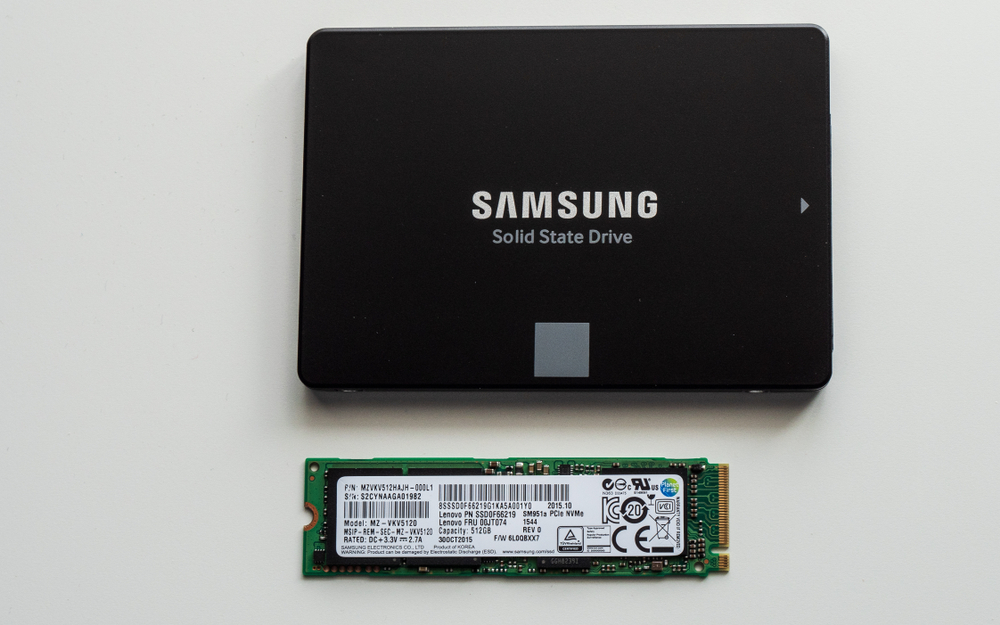What Is an SSD? A Basic Definition
SSD stands for solid-state drive, a type of PC storage that's faster than a hard drive. An SSD is able to read and write data much faster than a mechanical hard drive. The worst SSD is at least three times as fast as a hard drive. You’ll especially notice the difference when turning your PC on, opening an application, or switching between tasks.
To get a deeper understanding, see how installing an SSD can change the experience on a laptop, as per our sister site Laptop: “We upgraded a Dell Inspiron 15 5000 with a Core i5 processor and 8GB of RAM from a 5,400rpm hard drive to a 250GB SSD, and the time it took to load Word 2016 dropped from 31.9 seconds to 1.8 seconds. Loading the Chrome browser went from 14 seconds to 1.1 seconds, and Excel went from 19.9 seconds to 1.8 seconds.”
Your PC will run faster if it has an SSD, but it’ll also be more expensive. For example, when buying a PC, you can pay up to $270 more to go from a 500GB HDD to a 250GB SSD. If you buy an SSD for upgrading your machine, you can expect to pay anywhere from $70 if you find an SSD deal to $100 for a mainstream 250GB SSD.
There are two different types of SSDs: NVMe, also known as PCIe or PCIe-NVMe, and SATA.
What is a SATA SSD?
SATA SSDs look like laptop hard drives, flat and rectangular like the Samsung pictured above. They are the lowest grade SSD and use the same interface as hard drives. However, a PC that uses a SATA SSD has three to four times the bandwidth (how much data it can read/write simultaneously) than a PC using a hard drive. SATA SSDs are also more abundant and cheaper than NVMe-PCIe ones and are still great for common applications.
What is an NVMe SSD?
One type of SSD is PCIe/NVMe/PCIe-NVMeSSDs. PCIe stands for peripheral component interconnect express, and NVMe stands for non-volatile memory express. A PC using the fastest PCIe-NVMe SSD reads and writes at four or five times the speed of a PC using a SATA SSD. As such, PCIe-NVMe SSDs are better and more expensive than SATA SSDs. To install a PCIe-NVMe SSD onto your motherboard, you'll need to buy a motherboard with PCIe slots.
SSD Form Factors
SSDs also come in different form factors. This refers to the physical size, shape and connector of the SSD:
Get Tom's Hardware's best news and in-depth reviews, straight to your inbox.
- 2.5-inch - The most common type. They’re the same physical size and shape as a mechanical hard drive and fit into the same space as mechanical hard drives.
- M.2 - M.2 SSDs are thin memory sticks and fit onto the motherboard via an M.2 slot or M.2 connector (see our diagram and explanation of motherboard parts for more info). Some M.2 slots can only take SATA SSDs, while others can take both SATA SSD and PCIe-NVMe SSD.
- Add-in card (AIC): These are only seen on desktops. They plug into a motherboard's PCIe x4 or x16 slot, which are most typically used for GPUs or RAID controllers. Partially thanks to their large surface area, AIC SSDs, such as the Intel Optane 900p, are among the fastest SSDs.
- U.2: These look like SATA SSDs but use a different connector and speed data via the speedy PCIe interface. They also tend to be pricier and have larger capacity than M.2 SSDs.
This article is part of the Tom's Hardware Glossary.
Further Reading:
- Why I Will Never Buy a Hard Drive Again
- Best SSDs
- Best External Hard Drives and Portable SSDs
- How to Buy the Right SSD
- How to Tell an SSD Deal From a Solid-State Dud
- Dissecting the Modern Motherboard: Connectors, Ports & Chipsets Explained

Scharon Harding has over a decade of experience reporting on technology with a special affinity for gaming peripherals (especially monitors), laptops, and virtual reality. Previously, she covered business technology, including hardware, software, cyber security, cloud, and other IT happenings, at Channelnomics, with bylines at CRN UK.
-
Xerpadon Xerilious just want to point out that Drive is completely wrong.Reply
it stems from DISK as in storage, like floppy disk, Hard disk, Solid state disk.
Disk is storage memory as in digital data on a device in any shape or form.
hence sony's popular "Disc" still same pronounce but differently written.
people only started using "Drive" because windows calls them internally as software Drives. which stems from "Drivers" the software code to run such hardware devices in software.
its been over 40 years and people still make such horrible mistakes. -
Kenneth Dotsey I have what techie people might consider old hat but am running 1 GB old fashioned clunky hard drive with windows 8.1 and it is more than fast enough for me I think you just have to run disk clean up regularly and update and defrag no need for an ssd at least not until this drive fails also need to mention you need to purchase an operating system for 100's of dollrs to put on your shiny new ssd diskReply -
theoldhenk If you're upgrading from an HDD to an SSD, you don't need to re-buy Windows (Mac OS is free regardless), and if you're building a PC from scratch, you'll likely have to buy a copy of Windows anyway.Reply
Now that SSD prices have significantly fallen (since their 2010-ish inception), putting at least your OS and apps on an SSD is a no-brainer.

